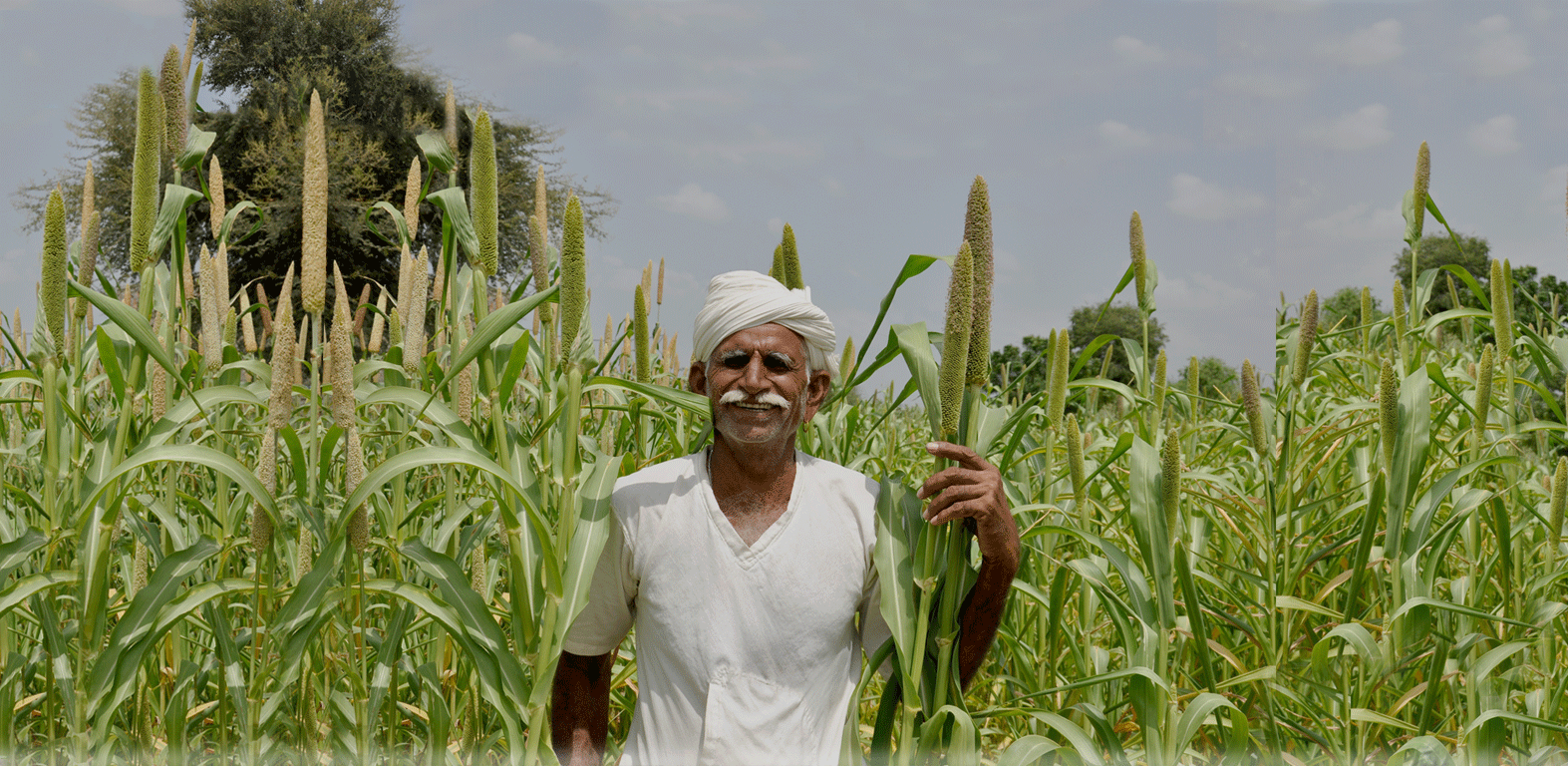Welcome to Jain Irrigation Systems Ltd.

Blog at Jains - THE FARMER: MY UNSUNG HERO
Dear Readers,
We have chosen to share with you an excerpt of a speech given by the Founder Chairman of the company. As with most of his speeches, these contain immense wisdom and thought–provoking words. This is the third in the series of speeches we are featuring on this blog.
Honorary membership acceptance speech, Indian Institute of Industrial Engineers, Hyderabad, Andhra Pradesh, 9 September 1993.
Let me begin with a few words about my rather obscure origins and career path. Born a son of a farmer, I proceeded to become an agricultural entrepreneur. I started as a trader of agricultural and related inputs, and then entered the manufacturing business. All my life, my activities have been focussed on serving the farm and the farmers. Having a natural empathy for the tiller of the soil, I reached out and focussed on ways and means to improve the agricultural inputs for higher productivity.
John F. Kennedy had said that the farmer is the only industrialist or entrepreneur who buys everything in retail, but sells everything in wholesale. Not only that, he also pays the freight both ways. And I want to add that the farmer is the only industrialist who does not, or is not allowed to, determine the price of what he produces. That aside, all the taxes must, at last, fall upon him. Apart from these man–made disadvantages, the farmer is also hapless against the vagaries of nature, mainly rainfall. Such is the plight of over 67 per cent of the economically active population in our country that comes from the agriculture sector.
Farming looks mighty easy when your plough is a pen and you are a thousand miles away from the field. The ivory tower of planning and all its plans have not meant much for the farmer in the past forty years.
Compared to the world, India has the third largest mass of arable land. We rank second in the world in respect of irrigated area and we top the world list in terms of availability of sunlight.
Existence of cheap and skilled labour is proverbial in India. Our yields for most of the crops are less than the world average. We are number one in groundnut production but number seventy–two in its yield. For rice and wheat production, we are number two in the world, but number fifty–four and number thirty–eight respectively in yield. We are number three in tobacco production but number forty–two in its yield. For sunflower, our yield is just 50 per cent of the world average. For jowar and cotton, it is 60 per cent and for pulses, it is 70 per cent.
It is obvious that in India, the per–unit agricultural productivity has not kept pace with the respective production. As a matter of fact, yields have stagnated or even declined for traditional crops like wheat, rice and sugarcane. On the other hand, the cost of inputs has risen. Agricultural workers are worse off than before. And the agricultural rate of capital formation has slowed down.
In India, because water is either available free or at a very nominal cost for agriculture, it has resulted in wasteful overuse. So, waterlogging in vast tracts of land has caused salinity. Similarly, subsidized fertilizers have been mindlessly overused and this has caused soil degradation. Wasteful use of low–priced electricity is fast depleting the underground water level, throwing large areas into the throes of desertification.
Mindboggling public investments in mega dam projects are giving rise to problems that challenge the very legitimacy of this concept. I dare to say, some dams are damned. By this, I don’t mean to say that big dams have no role to play in a nation’s water management policy. But I favour smaller watersheds towards this end. Small is sweet in this case. Divide a given area into smaller blocks, and distribute the available water in respective blocks judiciously and with traditional wisdom. If there is a nallah, build a bund. If a rivulet flows through a particular area, build a Kolhapur type bandhara. Instead of this wise approach, the authorities are building big dams first and then looking around to fill them with water. This is a very strange way of water management.
Big dams need a good deal of water, and that is simply not there. Further, whatever rainfall occurs, flows away into the sea. The first step towards effective watershed development is afforestation, so that rainwater can be conserved and preserved. Once the water bodies are recharged by efficient rainwater harvesting, we can then manage surface water through open dug wells or bore wells, or even farm ponds. In this manner, water management becomes more equitable and fair, since it provides for the water requirements of the smallest village. The biggest humanitarian advantage of smaller water management systems is that it does not require uprooting of indigenous tribes and communities from their centuries–old habitats. All this can be achieved in a better manner with smaller budgets, if we opt for smaller structures. The money thus saved can be rechannelled into agriculture through instruments such as soft loans to farmers.
This post is an excerpt from "The Enlightened Entrepreneur", which is a compilation of lectures that Dr. Bhavarlal Jain has given over thirty years. Replete with instances and expositions of what constitutes enlightened entrepreneurship: a notion that Jain iterates, must be embraced by each and every entrepreneur. This book provides invaluable insights into what successes and failures mean to a businessperson, the tenets of effective leadership and transformational businesses.
The book is available for purchase online at: http://goo.gl/5dgHLb or at the nearest bookstore.


